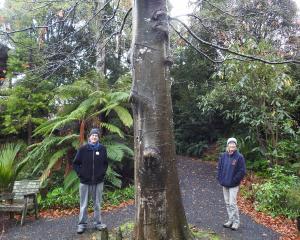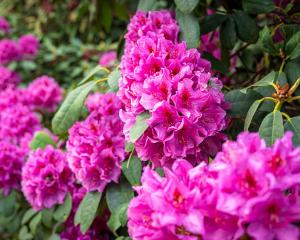The summer holidays are another reminder New Zealand's great outdoors is populated by plants which can cause harm if eaten, leading to a stinging mouth, sore stomachs, vomiting, itchy and painful skin or more serious poisoning.
The National Poisons Centre, in Dunedin, has analysed more than 11,000 inquiries it received after people came into contact with or ate poisonous plants or fungi.
Many of the most commonly plants inquired about - such as kowhai and arum lily - cause only mild symptoms, such as an upset stomach or burning mouth.
But a handful, including foxglove and oleander, require immediate medical treatment if eaten.
Poisons centre toxicologist Dr Leo Schep said calls were mostly made after young children ate plants.
Parents should know the plants in their garden and neighbourhood and avoid or get rid of potentially poisonous ones, he said.
The bright yellow of daffodils - which contain toxic alkaloids - were too appealing for 56 children and 28 adults, the centre's records for 2003-10 show.
The flower itself would cause only vomiting, but eating the bulb would require a hospital visit, Dr Schep said.
''Also, surprisingly, people drink the water that the plants have been in. Kids will do anything.''
Black nightshade was the most common poisonous plant inquiry, with 834 calls - 90% of which related to children.
The green, unripe berries of the common weed contain toxic alkaloids and can be mistaken for peas.
The plant was not to be mistaken for the similarly named deadly nightshade, which was extremely rare in New Zealand, Dr Schep said.
Because the green berries were low in toxicity, a 12kg 2-year-old would need to eat about 36 before there was any need for concern, Dr Schep said.
Arum lily caused a stinging of the mouth if eaten, but not serious poisoning. Kowhai was not a concern because the toxic seeds were encased in a hard shell: ''You swallow it and it just goes straight through your system.''
The fourth-most-common plant inquiry was about euphorbia or ''spurge'' - herbs or shrubs which have a highly irritating white, latex-like sap.
More than 100 calls to the centre were about eye exposure to the sap, which if left untreated can result in blindness.
Ongaonga, or New Zealand tree nettle, which can grow to 2m high, causes intense pain with itching after contact with the skin. Dogs have died after exposure.
Dr Schep flagged karaka, foxglove, hemlock and oleander as the most dangerous plants, particularly for toddlers.
Foxglove and oleander contain a toxin which can bring on serious cardiac issues, and can be treated with charcoal.
''If you've got kids and you've got an oleander tree in your property, it may be worth getting it bowled. And foxglove - get rid of it,'' Dr Schep advised.
The native karaka evergreen tree contains a toxin, karakin, which is most concentrated in its kernels. Small amounts of human ingestion were unlikely to cause serious poisoning, but dogs had died after eating the kernels, Dr Schep said.











